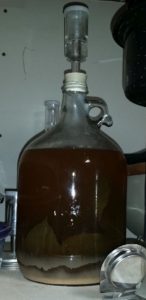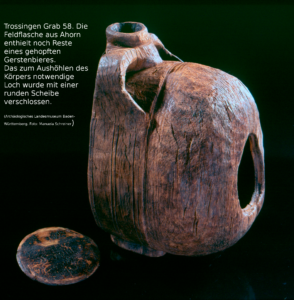We’ll have a little down time for the next couple of weeks, as the SCA’s biggest event, Pennsic, is about to begin. My wife and I will be going up this weekend to help with setup, but we won’t be on-site full time until late on Wednesday the 1st.
I’ll be teaching this year. It’ll be my first experience teaching (formally) at Pennsic; I’m a bit nervous, but I’ve been going over my stuff quite a bit lately, so I think it’ll go okay. (I’ll be mentioning the blog while there, and probably handing out my card to lots of people, so I’ll probably have to step things up, when I get back. Hi, new folks!)
Other exciting bits: After a mis-communication (or slight misunderstanding), I was prompted to re-build my beer cart, which goes by the title of “The Oracle.” (It’s a somewhat complicated story, which I’ll save for another post.) This one is Oracle v2.3. I’d originally planned for the next one to be v3.0, but there it is. Maybe next year–but more likely 2020.
I’m bringing up two kegs, plus hauling one for a friend. Mine are a Brown Ale and one of the Experimental Berlinerbier/Braunschweiger Mumme batches; the friend’s is the Pilsner-style from two months ago. I think we’ll be well-enough stocked for everything.
We’re doing quite a few experimental things this year, too. We’ve got a small solar setup (100W panel, one deep-cycle battery, plus charge controller and 300W inverter) to power the igniters on the propane stove (!). Yes, I know lots of folks do small (or not-so-small) solar setups at Pennsic… But aside from a small, portable 15W fold-up panel I brought last year, I don’t believe our camp has done anything quite this ambitious. I’m confident it’ll be fine.
Then there’s the bit about leaving the children to tend the homestead. Again, it’ll be fine–they’re 17 and 15, this year, and quite able to tend the animals, and cook for themselves. And we’ll be stocking them up with frozen dinners, just in case… And we’ll apparently be coming back every three or four days or so. (I’m of the opinion we could stretch it to “once in the middle of the trip,” but I’m not in charge of such things, so there it is.)
Then there’s what to do after we get home. Beyond the unpacking, leisurely showers, and clean clothes, I’m certain we’ll be spinning up to take on the next projects as soon as possible. Homestead-wise, that will be working on the utility room. Brewing-wise, though, I’ll have to consider.
I’m thinking I’ll be doing a series of… not classes, as such, but more “seminars” on brewing, going from the basics up to all-grain. The impetus is that I’ve had fully four people in the last two weeks ask me if I teach brewing. I’d like to do them in conjunction with my normal Brew Days, and maybe spread the word a little to see if there’s additional interest. I think it’ll be fun.
Speaking of fun, I was struck by inspiration this morning, for a set of brews based on various SCA awards. At the upper end of the scale would be the Peerages.
For the Pelicans, it would be probably something like a sessionable English bitter–something that would serve for everyday drinking. (Serve–get it? Pelican? Ha!) Masters Of Defense would have to be something in a Belgian Sour, sharp and brisk. Laurels–stay with me on this one–would be a Czech Pils: subtle and artistically challenging. And for the Chivalry, I’m thinking probably a Russian Imperial Stout. (Big, strong, and uncomplicated; about as subtle as an elephant.) All in jest, of course…
Anyway, if you’re going to Pennsic, dear Readers, please look me up (I’m in Ravenstreet, block E05, between Chandler’s Road and Brewer’s Road). I’ll try to get some pictures to share, for next time. Cheers!


 While I’m on the subject, the
While I’m on the subject, the 